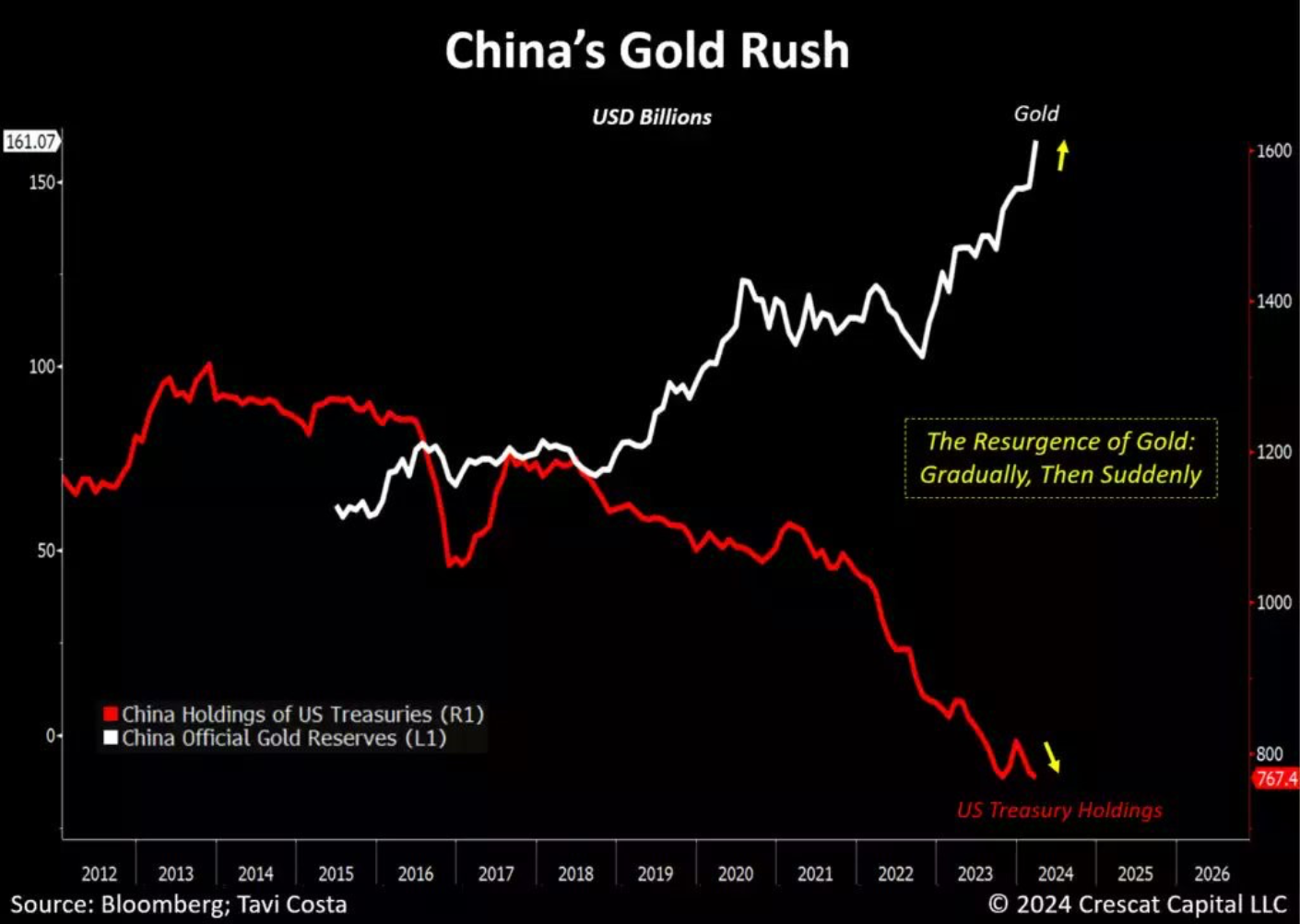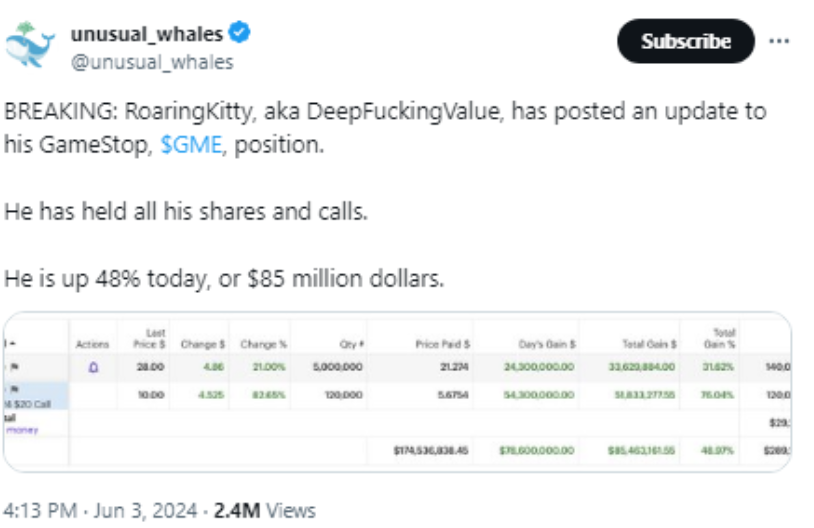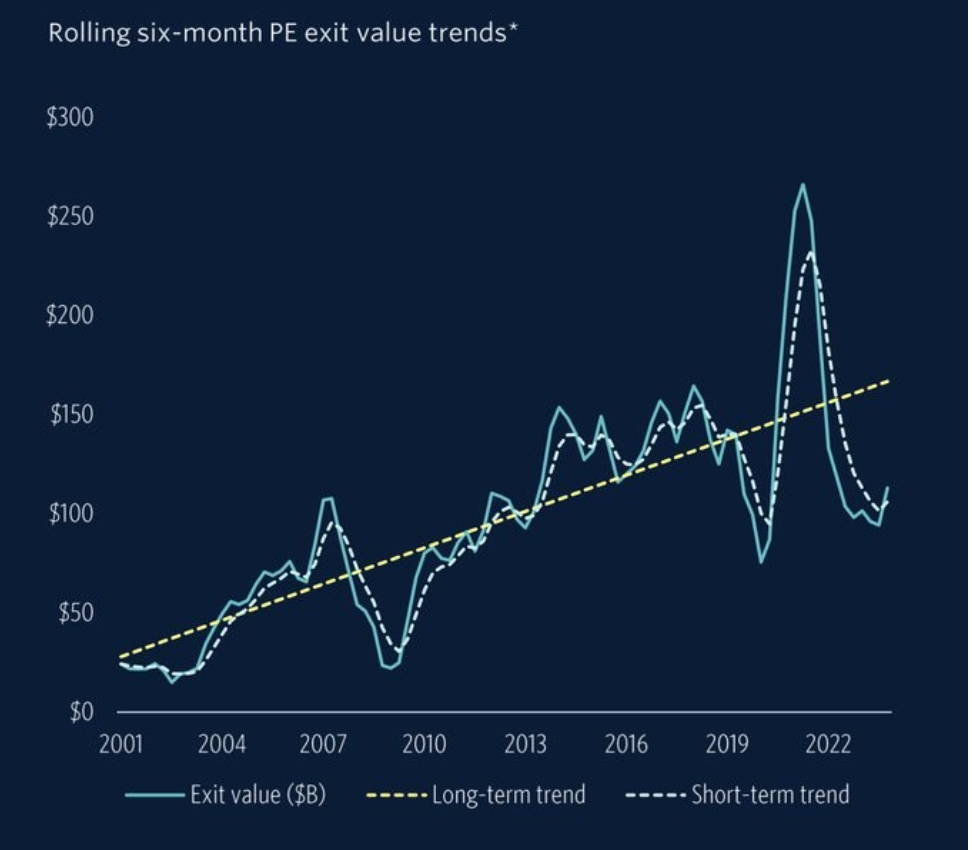Beacons of the Week
The two main purposes of a Lighthouse are to serve as a navigational aid and to warn ships (Investors) of dangerous areas. It is like a traffic sign on the sea.
Hoylake, Redrocks, Royal Liverpool Golf Course, Wirral, England submitted by Dave MacNicol
This lighthouse is not an active lighthouse nor was it ever used as an operational lighthouse. The structure is adjacent to the famous Royal Liverpool Golf Course and is used for cocktail hour for golfers, tourists, and locals.
Kõpu Lighthouse, Hiiumaa, Estonia
This lighthouse was built in 1531 and stands at 36 meters tall. The plans for the lighthouse date back to 1490 and provides an aid of passage through the Baltic Sea. Today the structure serves as a major tourist attraction.
*Feel free to send us your photos of Lighthouses to be featured in our weekly market observations.
Probably nothing
Since the early 2010s, China has trimmed its holdings of U.S. Treasuries. In 2018, the
selling pace accelerated, and in late 2021 the pace accelerated by an extreme amount.
It’s almost as if China is doing this purposely. They are reducing their U.S. risk, reducing the risk of the U.S. freezing some of their assets, and flooding the market with Treasuries at a time when rates are on the rise and investors are not hungry for Treasury exposure. We think this was a calculated and well- thought-out decision by the CCP and is yet another piece of evidence that the Eastern and Western economies are decoupling.
While China exited U.S. Treasuries, their Central Bank bought up billions in gold. Since 2018, China’s holdings of gold have more than doubled.
So why is China buying gold and other Central banks doing the same thing? Inflation and the issues that Central Bankers and Politicians have caused in recent years are bubbling over. The world’s most powerful country and largest economy is financing deficit after deficit by simply turning on their printers and devaluing their currency and treasuries. We think this rotation will continue around the world as Central Banks wake up and realize the major issues in the system that they caused.
China has accelerated this trend over the last 25 months due to U.S. sanctions on Russia. When Russia invaded Ukraine in early 2022, numerous sanctions were placed on Russia including the U.S. government freezing $300 billion in U.S. Treasuries held by Russia. This new risk for adversaries of the U.S. can be avoided by rotating into other assets that cannot be controlled by a government, like gold, silver, or platinum.
Gold’s supply cannot simply be increased by the push of a button by a Central Bank. The other advantage that gold has over fiat currencies is its applications as it has real-life usage. We think gold’s positive correlation to inflation, applications, limited supply, and store hold of value make it a beautiful asset for all types of investors.
We think gold allocation is vital to a portfolio, especially in the economic environment that we find ourselves in. We continue to be bullish on gold and the gold mining industry especially when we see charts like the one above.
Disclaimer: MacNicol & Associates Asset Management owns physical gold, silver and platinum, gold securities, and gold mining equities across various client accounts.
Meme craziness
Two weeks ago, we saw the return of popular retail trader Roaring Kitty. Keith Gill (Roaring Kitty) returned to social media after a few years and led retail traders into GameStop (once again). GameStop and other meme stocks surged in the following days. Gill who made a lot of money in 2021’s short squeeze made even more Monday. On Monday he made even more after disclosing his GameStop position on Sunday afternoon.
Gill revealed his position on Reddit. The picture showed that he owned 5 million shares in GameStop and 120,000 call options with a $20 strike price and an expiry of June 21st. GameStop shares ripped on Monday before falling throughout the day.
As of Monday’s close, Gill’s GameStop positions were reportedly worth $289 million after not selling any of his options which are in the money or his underlying shares.
A trader who has grown his account based on short squeezes and revolutionizing markets through growing a following is very 2024 and is something that investors would not have been able to comprehend just 10 years ago.
During this mania, it was reported that E*trade which Gill uses to trade is considering kicking him off the platform according to the Wall Street Journal.
The stock trading platform and its owner, Morgan Stanley have concerns over stock manipulation led by Gill.
Many investors and market participants have pushed back at the institution considering kicking Gill off the platform and have cited concerns with the reports that he trades on E*trade citing that this should be private information.
We doubt GameStop shares get close to their pandemic highs of $483 but guarantee it will be a wild ride along the way. A hedge fund that lost big on GameStop in 2021 was shorting GameStop once again had to close out its position in May and re-enter the position. This one-off short squeeze led by retail traders during COVID-19 has become a regular fixture in capital markets.
We would recommend that our readers avoid shorting or going long any of these meme stocks. The risks are too high to short and there is no fundamental case to go long. Simply grab your popcorn and watch it unfold.
Some weak economic data
Stocks pulled back slightly this week as did certain commodity prices due to worsening economic indicators which have been released over the last few weeks. Stocks rely on earnings growth. Earnings are driven by consumers, and consumers spending decisions are dependent on the economic environment. This week, despite falling treasury yields, stocks slid on this fresh economic data.
Several economists have warned over the last week or so that poor economic data is starting to pile up and is getting to a point where it cannot be ignored.
Profits have been robust for corporations on the surface, but some economists believe
that is for firms that can control costs and adapt to the current state of the market. What many economists have noticed in recent months is consumers are being pickier with their purchases.
On Monday, the U.S. job openings report was released. Job openings fell by more than expected to a 3- year low. This jobs report followed a Manufacturing report that reflected a slowdown in manufacturing activity and an unexpected decline in construction for the second straight month.
All eyes are on the U.S. jobs report which will be released on Friday (when this publication is released) which is expected to show new jobs created of 185,000 in May, an increase from April’s number.
Consumers have been cheering on this weak data as they believe it will warrant rate cuts sooner rather than later. However, we would warn investors as the FED is usually late to the party and a real earnings slowdown could severely impact equity markets. Tom Essaye, the founder of Sevens Report echoed this opinion in an interview with Barron’s this week, citing that he has seen two instances in his career when investors have cheered on an economic slowdown, and both times the FED mistimed rate cuts and could not prevent the slowing from becoming a broad economic contraction.
This week is a great example of this as stocks moved lower despite treasury yields decreasing. Over the last 4 trading sessions, the U.S. 10-year Treasury Note yield decreased from 4.61% to 4.33%.
We will report back on the economy next week after Friday’s job report is released.
Mistakes by Walmart
Inflation, inflation, inflation. Something that has negatively impacted consumers in recent years that will shape global politics moving forward. Voters are prioritizing economic policies including inflation as they head to the polls. This is not new information.
The only reason we bring up inflation once again is due to a photo that went viral on X this past week. The photo was shared by numerous accounts and even if it’s fake, it highlights the inflationary environment we have been living under over the last 2-3 years.
We know it could be fake or it could be a mistake but nonetheless quite funny.
Bank of Canada
The Bank of Canada cut interest rates by 25 basis points on Wednesday morning. The decision surprised no one as the street estimate was a cut. This makes Canada the first G7 country to slash interest rates during this cycle. This moved the policy interest rate from 5% to 4.75%. Canada’s policy rate had been at 5% for exactly 1 year and was at the highest point since 2001.
Canada’s economy has slowed as has its inflation rate. However, Canada’s economy has been stagnant for quite some time, and GDP has increased in recent years purely from increased immigration. GDP per capita has been essentially flat in the country since 2015. It seems innovation and entrepreneurship have ground to a halt in the great white north.
The decision by the Bank of Canada to slash rates before the FED could lead to the Canadian Dollar being under pressure as money exits Government of Canada securities.
The Governor of the Bank of Canada said in a statement that further rate decreases are on the table if inflation continues to ease this year.
Despite inflation rates coming down in recent months, economic struggles in Canada are real. Prices have skyrocketed for necessities like gas, food, and shelter over the last few years. This is by no means a win for the Canadian government. It is a problem that they caused through poor economic policy including excessive spending, overregulation, and increased taxation.
Canadian equities surged on this Bank of Canada announcement while the loonie slipped relative to other major currencies.
In a research note on Tuesday, Bank of America said they expect the Bank of Canada to cut interest rates at every meeting remaining in the year to take the overnight policy rate to 3.75%. If this happens and the FED only cuts rates once or does not cut rates, the loonie will be under severe pressure, and will potentially be at lows that we have never seen before.
Economists are forecasting that the FED hold rates in place at their decision due next week and are forecasting a potential cut at the September meeting. Economists also believe the ECB will cut rates on Thursday of this week.
New sheriff in town
Pardon the pun but we had to.
BlackRock and Citadel are reportedly backing a group to start a Texas Stock Exchange (TXSE) that they hope will compete with the New York Stock Exchange. The world’s largest exchange has gone unchecked for a century with only one formidable competitor in North America, the Nasdaq.
This group of institutions and investors are reportedly attempting to diversify the American financial system and compete with the NYSE. Will this make Texas a financial hub moving forward? We think so. We have already seen this trend for a few years in Florida, specifically Miami which has been dubbed Wall Street South and the capital of crypto. Institutions moved south due to nice weather, less taxation, less regulation, and COVID-19 restrictions. This blue state to red state trend for institutions and investment is not slowing down. We expect this to accelerate moving forward. We think more and more companies will continue to flee California and New York in favor of Texas and Florida.
This trend is why we have been focused on numerous southern states in our real estate fund in the MacNicol Alternative Asset Trust. Many of the assets we hold are in Texas or Florida. But you already know that.
Back to the exchange.
The exchange plans to launch in Dallas and has raised approximately $120 million. The group plans to file registration documents with the SEC to start operations as a national securities exchange later this year. The exchange is dubbing itself CEO-friendly in the face of rising regulation from exchanges like the NYSE and Nasdaq.
The Chairman and CEO of the TXSE went to LinkedIn to confirm the reports citing “Texas’s booming economy and the strong economic and population growth among states in the southeast quadrant of the U.S. present incredible opportunities for businesses — and ultimately the Texas Stock Exchange.”
The TXSE is planning to start trading in 2025 and host listings by 2026. In an interview with the Wall Street Journal, the CEO thanked the Governor of Texas for his support and leadership in this endeavor.
The “Lone Star State” continues to make waves in numerous industries and is seemingly diversifying its growing economy. Do you think the TXSE has what it takes to compete with the big boys? Either way, competition breeds innovation and we are happy to see this happen.
Bitcoin demand
Bitcoin ETFs saw their largest single-day inflows this week in 3 months. It seems investors are increasing their risk tolerance and piling into the cryptocurrency.
We continue to look at diversified ways to gain exposure while managing risk in the speculative asset. We do warn our readers that they should minimize their exposure to Bitcoin to a small single-digit percentage of their portfolio. We also warn our readers not to chase gains in the area as historically Bitcoin does have large drawdowns every few years.
Private equity to return to the mean
It’s been a slow few years for deal-making. Investment bankers have seen their bonuses slashed, hiring has slowed, and layoffs have occurred. The same can be said for private markets. Deal flow has been slow and exits have ground to a halt due to high interest rates and the state of equity markets.
That in recent months has slowly changed as deal markets have heated up. IPOs, secondaries, mergers, and even private market investments have slowly picked up in recent months.
As private equity investors through the MacNicol Emergence Fund, we are pleased to hear and see this.
The other thing that we think will continue to heat up in private equity aside from deal-making and exits is the valuation of an exit. We think there has been a correction in exit multiples in private equity over the last 2.5 years. It makes sense equity markets slowed down, interest rates surged, and inflation impacted consumers and businesses. People were not willing to pay as much for these companies which impacted exit multiples. We think exit multiples along with the number of exits will heat up moving forward.
The chart below highlights the rolling 6-month PE exit value trend since 2001. The current exit value is well below the historical mean, and close to the lows that we saw at the start of Covid-19. We are not saying we will see a spike like we saw in 2021 as that was not sustainable for the industry. We simply think there will be a reversion to the mean and exits will seriously pick up from here. The 2021 outlier in PE exit value was also impacted by the SPAC frenzy which has thankfully disappeared.
MacNicol & Associates Asset Management June 7, 2024












